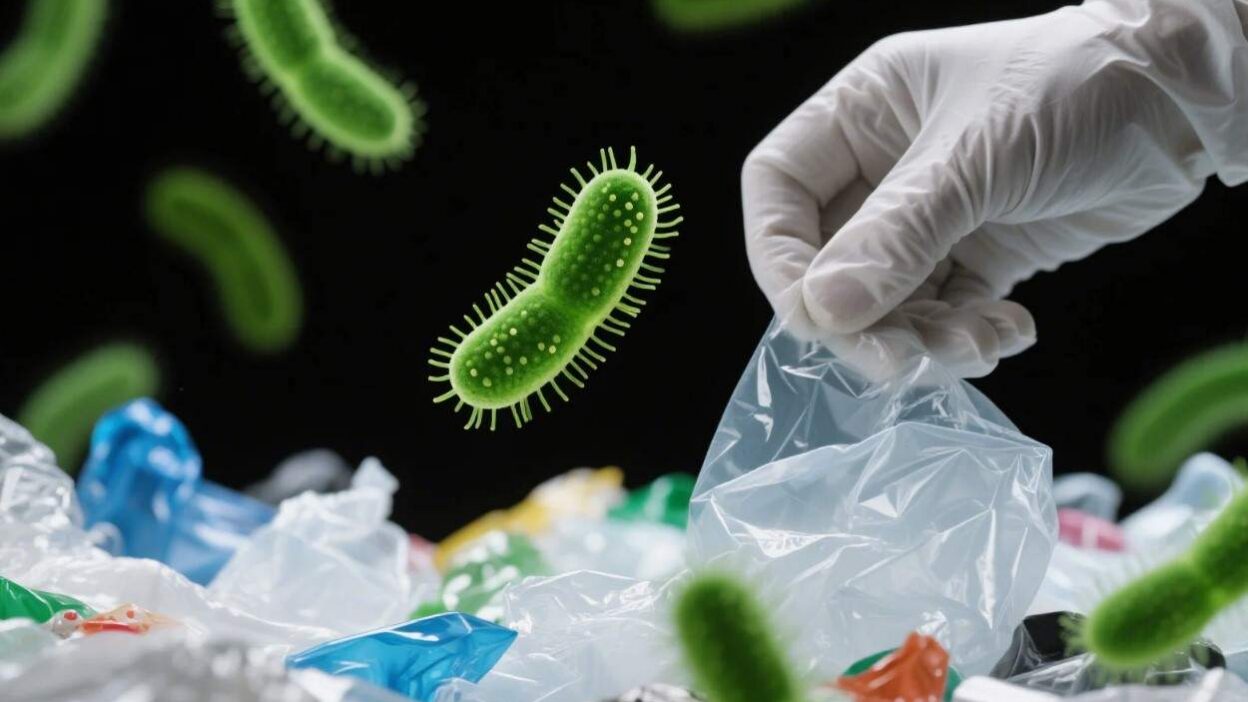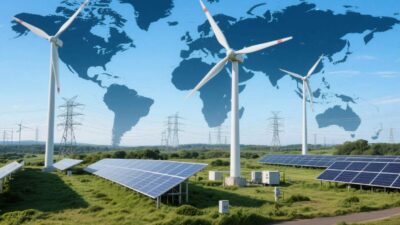Engineering a Solution to the Plastic Crisis
The Plastic Pandemic and the Need for Biological Innovation
Plastic waste is a global crisis. Over 400 million tons of plastic are produced annually, with half designed for single-use. Less than 10% is recycled, and a staggering 14 million tons end up in oceans each year—killing marine life, leaching toxins, and persisting for centuries. Traditional methods—landfills, incineration, and mechanical recycling—are inefficient, expensive, and often counterproductive (e.g., incineration releases toxic fumes; mechanical recycling degrades plastic quality).
Enter bioengineered bacteria: genetically modified microbes designed to break down plastics at the molecular level. By harnessing the power of synthetic biology, scientists are engineering bacteria to degrade even the most stubborn plastics—like polyethylene (PE), polypropylene (PP), and polystyrene (PS)—turning waste into valuable resources. This report explores how these microscopic innovators are rewriting the rules of plastic waste management.
The Problem with Plastic Waste: Why Traditional Methods Fail
Plastics are notoriously durable, thanks to their long, stable polymer chains. Most degrade only over centuries, and even “biodegradable” plastics require industrial composting conditions (high heat, oxygen) unavailable in most landfills. Current solutions fall short:
- Mechanical Recycling: Chops plastic into flakes, but can’t process contaminated or mixed plastics. Output is lower-quality “downcycled” material (e.g., turning a soda bottle into a park bench).
- Chemical Recycling: Breaks plastics into raw materials (e.g., pyrolysis converts plastic to fuel), but is energy-intensive and emits greenhouse gases.
- Landfills and Incineration: Landfills leach toxins into soil/water; incineration releases CO₂ and hazardous pollutants like dioxins.
Bioengineered bacteria offer a radical alternative: biological recycling—using living organisms to degrade plastics into harmless byproducts (e.g., CO₂, water, or reusable monomers).
Bioengineered Bacteria: The Microscopic Heroes of Plastic Recycling
Bioengineered bacteria are microbes (often Pseudomonas, Bacillus, or Streptomyces species) modified to produce enzymes that target specific plastic polymers. Here’s how they work:
1. Enzyme Engineering: Targeting Plastic Polymers
Plastics are made of repeating monomer units (e.g., PET = ethylene glycol + terephthalic acid). Bacteria naturally produce enzymes (proteins) that break chemical bonds, but most lack the tools to degrade synthetic polymers. Scientists engineer bacteria to overproduce plastic-degrading enzymes (e.g., PETases for PET, esterases for PE/PP) or even create entirely new enzymes tailored to tough plastics.
For example:
- PETase: Discovered in 2016 in Ideonella sakaiensis (a bacterium found in a Japanese recycling plant), PETase breaks PET into terephthalic acid and ethylene glycol—raw materials for new plastic.
- MHETase: Another enzyme from I. sakaiensis that further breaks PET fragments into usable monomers.
2. Genetic Modification: Boosting Efficiency
Researchers use CRISPR-Cas9 and other gene-editing tools to enhance bacterial performance:
- Overexpression: Insert genes to produce more enzymes, speeding up degradation.
- Stability: Modify bacteria to thrive in harsh environments (e.g., high temperatures, acidic conditions) found in landfills or industrial reactors.
- Multi-Enzyme Systems: Engineer bacteria to produce a “cocktail” of enzymes that target multiple plastics simultaneously (e.g., PE and PP).
3. Scaling Up: From Labs to Industrial Facilities
Bioengineered bacteria are being tested in pilot plants and industrial settings. For instance:
- Carbios (France): Developed a PET-degrading enzyme (PETase) that breaks down 90% of PET waste in 16 hours—far faster than traditional recycling. The company plans to scale this to industrial facilities by 2025.
- University of Edinburgh: Engineered Bacillus subtilis to degrade polystyrene (PS), a plastic found in packaging and disposable cutlery. Their strain breaks down PS into CO₂ and water within days.
Benefits: Why Bioengineered Bacteria Are a Game-Changer
1. Environmental Sustainability
- Reduced Landfill Use: Bacteria degrade plastics directly, eliminating the need for landfills and reducing soil/water contamination.
- Lower Carbon Footprint: Biological recycling emits 70% less CO₂ than chemical recycling and avoids the energy costs of incineration.
- Circular Economy: Converts plastic waste into raw materials (monomers) for new plastics, closing the loop and reducing reliance on fossil fuels.
2. Economic Potential
- Cost Savings: Industrial-scale bioconversion could reduce waste management costs by 20 billion annually by 2030 (per McKinsey).
- New Markets: Degraded plastics can be sold as raw materials, creating jobs in biotech, waste management, and manufacturing.
3. Public Health and Safety
- Eliminates Toxic Leaching: Bacteria prevent harmful chemicals (e.g., phthalates, BPA) from leaching into ecosystems or drinking water.
- Reduces Microplastics: By breaking plastics into harmless byproducts, bioengineered bacteria prevent microplastics from entering food chains.
Challenges: Overcoming Hurdles to Scale
While promising, bioengineered bacteria face technical, regulatory, and societal challenges:
1. Technical Limitations
- Enzyme Stability: Many enzymes denature (lose function) at high temperatures or in acidic conditions, limiting their use in industrial reactors.
- Rate of Degradation: Some bacteria degrade plastics too slowly for large-scale operations (e.g., breaking down a ton of plastic could take weeks).
2. Regulatory and Safety Concerns
- GMO Regulation: Releasing bioengineered bacteria into the environment requires strict approval to prevent unintended ecological impacts (e.g., disrupting soil microbiomes).
- Public Perception: GMOs are often viewed with skepticism. Transparent communication about safety and benefits is critical.
3. Economic Barriers
- High R&D Costs: Developing and scaling bioengineered strains requires significant investment in labs, equipment, and testing.
- Competition with Traditional Methods: Incumbent recycling and waste management industries may resist adoption.
Real-World Progress: Pioneering the Bioconversion Revolution
- Carbios (France): In 2022, the company opened a pilot plant using its PET-degrading enzyme to process 100 tons of plastic waste annually. It plans to build a commercial facility by 2025, with capacity to process 50,000 tons/year.
- Polyhydroxyalkanoates (PHA) Producers: Companies like Danimer Scientific engineer bacteria to produce PHA—a biodegradable plastic—directly from waste oils or agricultural byproducts.
- NASA’s Bioengineering for Space: Researchers at NASA are developing bacteria to degrade plastics in space, where waste management is critical for long-duration missions.
The Future: A Plastic-Free World Through Biology
The future of plastic waste management lies in merging synthetic biology with industrial innovation. Here’s what’s next:
- AI-Driven Enzyme Design: Machine learning will accelerate the discovery of new enzymes, optimizing their ability to degrade complex plastics.
- Synthetic Biology 2.0: Engineers will create “super bacteria” capable of degrading multiple plastics simultaneously, even in extreme environments.
- Policy Support: Governments must incentivize bioconversion (e.g., tax breaks for biotech firms, subsidies for waste management companies) to drive adoption.
Engineering a Greener Tomorrow
Bioengineered bacteria are not just a scientific curiosity—they’re a lifeline for a planet drowning in plastic. By converting waste into resources, these microscopic innovators offer a scalable, sustainable solution to one of humanity’s greatest environmental challenges.
As research accelerates and industrial adoption grows, the day when “plastic waste” becomes a relic of the past is closer than ever. The question now is: Will we invest in the technology and policy needed to make this vision a reality?



